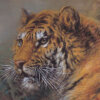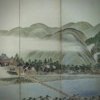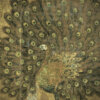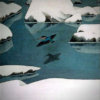Imao Keinen: A Great Master Who Drew Richly Colorful Bird-and-Flower Paintings in the Modern Kyoto Paintings World
Imao Keinen was born in 1845 in a family that ran a trader or dealer of yūzen-dyed fabrics in Kyoto. He loved to draw pictures since he was an infant and walked in the way to be a painter in the environment naturally without any particular reasons. When he was 10 years old, he posted pictures of specters around his house and played with children in the neighborhood using the house to be a haunted house. In the meantime, all his family members got a flu at that time so that he was scolded tightly. It has been said that the episode made him decide not draw any pictures that could suggest specters or ghosts any more in his life. Initially, he studied under Umegawa Tōkyo as an apprentice to be a painter. And later, he became a disciple of Suzuki Hyakunen recommended by Tōkyo when he was 14 years old.
Although he had to be in a position to inherit the family business for a while, he succeeded to be independent by supplicating his elder brother to be in the position instead of him when he was 24 years old. After that, he received meritorious mentions again and again at exhibitions including the Kyoto Expo. Also, he received many awards including the bronze price at the 1st Naikoku Kaiga Kyōshinkai Exhibition in 1882 and the 1st prize gold medal at the Nara Expo in 1852 so that he could attain reputations with the painting technique to express bird-and-flower rich colorfully and meticulously based on the sketches. He was chosen as an Imperial Household Artist in 1904 and a member of the Imperial Fine Arts Academy in 1919. He was an honest character by nature and spent the whole life as a painter. He passed away in 1924. They say, he was a man who loved Japanese potted plants (bonsai) and puppies as well.
“Botan Shōkinzu” (Small Birds Perching on a Peony)
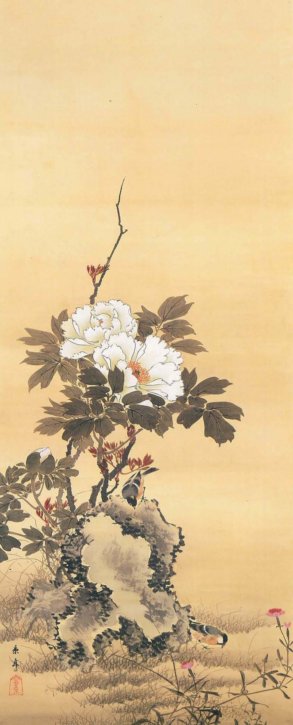
“Botan Shōkinzu” (A Small Bird Perching on a Peony) is a piece of work that was drawn by Imao Keinen to arrange two varied tits on a peony. It does not look the unique coloring peculiar to Keinen yet and the softness is not sufficient, either. Those are the reason why this one thought to be drawn in his early days. Although it looks drably as a whole, such a quiet painting style is also one aspect of the pictures drawn by Imao Keinen. The vermilion coloring of pink flowers on the front is arranged well to be shown up.
“Ashi Sui Kinzu” (Reeds, Water and Birds)
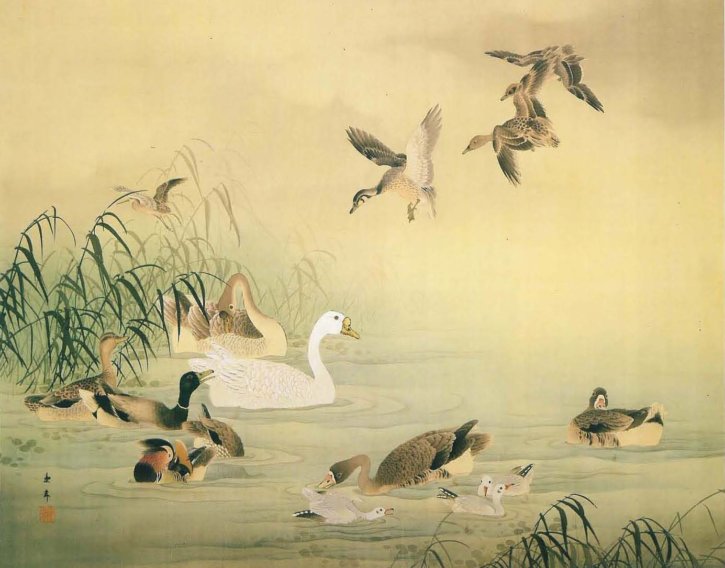
“Ashi Sui Kinzu” (Reeds, Water, and Birds) might be drawn around the 30th year of the Meiji era (just before the 1900s). Several kinds of winter birds such as ducks flying in, snipes flying out, a mute swan resting its wings, mandarin duck, wild goose, and black-headed gull are drawn in. Although the objects are what Keinen was good at, no splendid colors were used because the water is the surface of a lake in the winter season. However, the coloration of the bush of reeds and the wings of birds are clear and beautiful.
Shiki Kachōzu (Flowers and Birds of the Four Seasons)

Imao Keinen whose age was 1 year different from that of Kōno Bairei who fostered Takeuchi Seihō and Kikuchi Hōbun, was active in the painting world of Kyoto around the same time with Bairei and enjoyed longer life about 30 years than Bairei. He devoted such his long life only to bird-and-flower painting so that he did not develop his painting style along with the changing senses in the new era differed from what Seihō and Hōbun did. He started to study the bird-and-flower painting incorporating the sketching style of Maruyama school and Shijō school under Suzuki Hyakunen, and the painting style was peculiar to Keinen, which was not immersed in the sentimentality of the both schools completely but peppered the whole composition based on the well-modulated realistic painting. However, his bird-and-flower paintings had some limitations in terms of modernization. Although he could incorporate the new sense of the time into the composition, he should have encountered the further big change to the Japanese painting in the Taishō era. That could be the reason why he did not exhibit his works since the 6th Bunten Exhibition in 1912. It may be said that Imao Keinen was the last painter who completed bird-and-flower painting based on Maruyama and Shijō schools so that it could be the unique painting style peculiar to him in the pre-modern Kyoto school.
The splendid folding screens of bird-and-flower paintings in spring and autumn were presumed to be produced around the 20th year of the Meiji era (around 1886 to 1888). The time was around when Imao Keinen was about 42 or 43 years old, which was the typical timing when he was keenly motivated for the production. Until then, he had been awarded the first and second prizes at the Kyoto Expo and Nara Expo, so that Keinen should have been getting renowned higher and wider.
In this pair of six-fold screens right and left, firstly young bamboo, then, representative flowering trees and shrubs such as fragrant plum blossoms and peonies are depicted in the right side. The birds which are perching on the plum branch are male and female bulbuls. The long-tailed beautiful bird which is staying just beside the peonies is a golden pheasant. The technical coloring control of the vermilion is pointed out in the total composition. Wild roses are drawn obscurely on the other side of the rock in shadow, and sparrows in the sky guide our eyes to the left naturally and flowingly. Then, a peacock that Keinen was good at is drawn on the left 3 screens in the right artwork, which is comparable with the other peacock drawn on the left artwork and arranged to be an important position. Next, our eyes are guided to the waterfront where azalea and monochoria korsakowii are there, also, thrushes, a kingfisher flying into the sky, and a pair of Baikal teals on the water surface are there. This piece of work, which looks like a model for how the tradition of bird-and-flower painting in Maruyama and Shijō schools into Keinen, can show that to you, too. Then, lines of our sights are guided to the left half naturally and flowingly by sparrows as they were flying from the right-half folding screens to the left-half ones. Mandarin ducks are resting on the waterfront. Birds, perching on the evergreen pine branch, are a woodcock, originally known as living in Taiwan, and whose tail is very beautiful. Paddy birds are there beside them and a sulphur-crested cockatoo, originally living overseas is too in the further left side. Eurasian collared doves are depicted on the ground as well. Although those various kinds of birds depicted as Keinen liked to do, gorgeous peacocks present splendid dignity, which looks like the other small birds are prostrate to the peacocks. Colorful chrysanthemums are in full bloom. Roses are also clearly drawn on the left half as if they smell. On the other hand, the season on the left half changes to autumn before we realize that. Thus, the felicity to unify the compositions on the right and left halves looks completed exactly as if Keinen teaches that this is the orthodox way for bird-and-flower painting in Maruyama and Shijō schools. In this sense, this piece of work can be said to be an important example to know the performance of Keinen during this period. Shortly after that, he completed the “Kachō Gafu (Bird-and-Flower Painting Book)” in 1891 and became an established great master to be active in the painting world of Kyoto gradually. Looking back on his painting works, it can be said that he is a rare bird-and-flower painter born in Kyoto.

